The Big Read: Bus contracting model has benefited drivers, commuters — but will the good times last?
SINGAPORE — Four years ago, whenever Ms Natalie Ng took bus service 174 from her home in Jalan Jurong Kechil to the area where Beauty World MRT Station now stands, she would have to wait around 15 to 20 minutes for her bus to come along at around 9am.
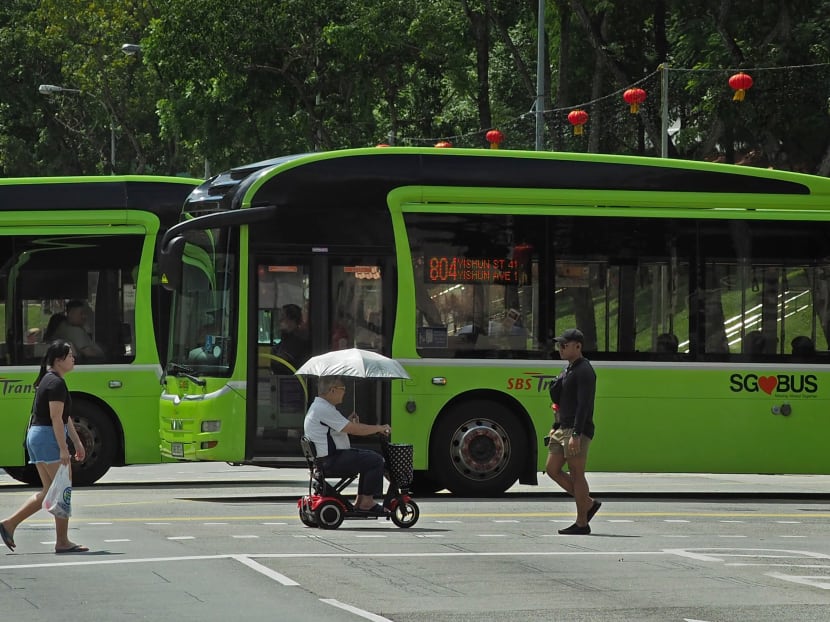
When the bus contracting model was introduced in Singapore three years ago, it promised better bus service standards for commuters and better working conditions for drivers.
SINGAPORE — Four years ago, whenever Ms Natalie Ng took bus service 174 from her home in Jalan Jurong Kechil to the area where Beauty World MRT Station now stands, she would have to wait around 15 to 20 minutes for her bus to come along at around 9am.
However, these days, Ms Ng, 24, who works in a creative agency, has noticed a “slight improvement” in the frequency of the service, and says she has to wait for only about 10 minutes.
She has also detected other changes in the bus services in her area. For instance, “popular” bus service 985 used to be served only by single-deck buses. However, just before the Downtown MRT Line became operational in 2017, double-decker buses plied the route as well.
The changes that Ms Ng observed coincided with a push by the authorities to improve service levels in the public transport industry, which saw the introduction of the bus contracting model in 2016.
The model represents a major overhaul of the public bus industry and is meant to address persistent grouses from commuters over route coverage and waiting times. It also served to enhance connectivity for commuters with new services added to areas such as Bedok, Bishan and Ang Mo Kio.
While commuters have seen an improvement in bus services since the model was introduced, it is in fact heavily subsidised by the Government to the tune of hundreds of millions of dollars each year.
This has raised the question on how long this is sustainable without bigger increase in fares, said experts interviewed by TODAY, adding that commuters who want better must be prepared to pay more.
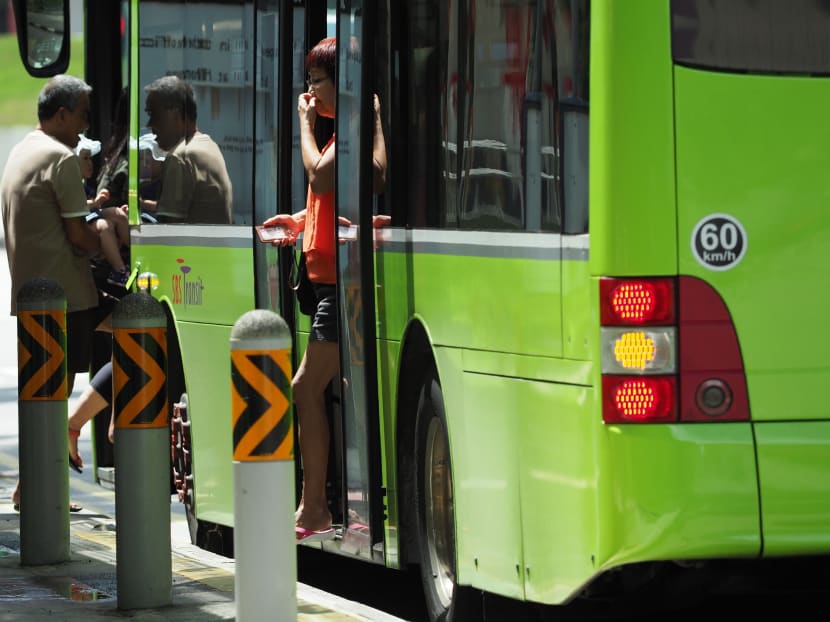
HOW BUS CONTRACTING MODEL WORKS
Under the model, operators bid for a package of routes through competitive tendering. The Government owns all fixed and operating assets and retains fare revenue while bus operators earn a fee for running services.
Bus operators also have to meet service standards set by the Land Transport Authority (LTA).
This is a departure from the previous privatised model where operating assets, such as depots and buses, were owned by both the Government and the two incumbent operators, SBS Transit (SBST) and SMRT.
The bus operators kept all the fare revenue which they used to pay for operations and operating assets.
This model, said the Government, did not incentivise operators to expand their capacity ahead of demand or improve service levels.
Since LTA launched the bus contracting model, it has tendered out four bus packages, with the last contract for the Bukit Merah package secured by SBST last year.
New tenders were called by the LTA last month for operators to run a total of 56 bus routes — 29 routes as part of the Bulim package and 27 routes as part of the Sembawang-Yishun package.
The Bulim bus package is currently under London-based Tower Transit, which began its operations from Bulim Bus Depot in May 2016. The package is up for renewal in 2021.
The Sembawang-Yishun package is currently under SMRT, which has been the contractor since September 2016. The tenders will close on March 30.
BUMPY RIDE AT THE START
It has not been a completely smooth ride for the new bus operators here.
Mr David Cutts, the regional managing director of British company Go-Ahead, said that one of the challenges it had faced in the initial stages was introducing the interlining model of running buses in Singapore.
Interlining is a concept which requires bus drivers to drive multiple routes during a shift, instead of just one.
For instance, after completing Route A, a driver may not be required to do another trip for 20 minutes. Within that time span, the same driver may drive another route (Route B), before returning to the interchange to ply Route A again.
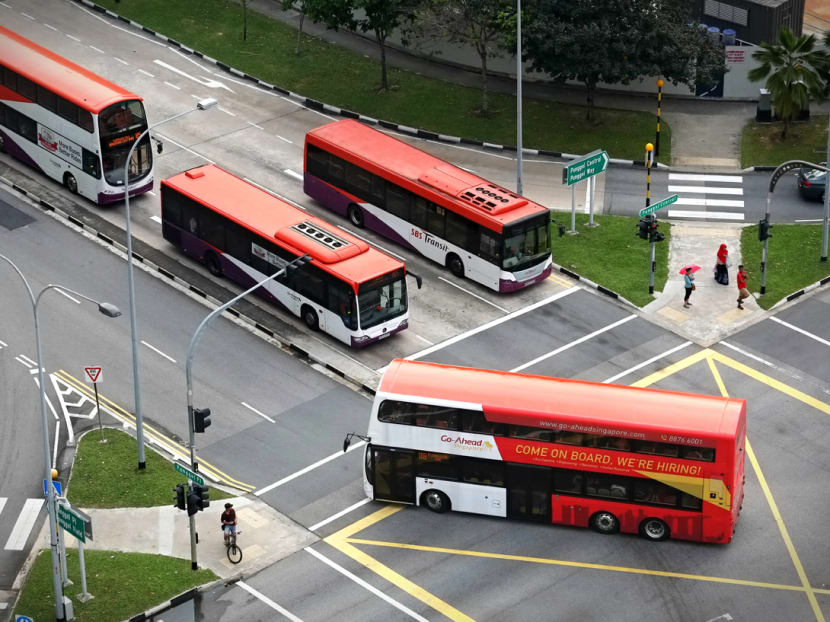
While this is a concept that is practised widely in cities like London, it led to a spate of resignations among Go-Ahead’s drivers who could not cope with juggling multiple routes two weeks into commencing operations in September 2016, forcing the company to sub-contract drivers from SBST and SMRT.
Since that episode, Mr Cutts said, bus captains are no longer forced to take up interlining. While the concept remains in place, only 40 per cent of its bus captains work interlining routes and at a rate where they are comfortable with.
The company has also increased the number of its bus captains, from 800 when it first started operations to 850 now. It offers a total of 30 bus services, four more than what it started with.
EASING THE PEAK PERIOD CRUNCH
In response to TODAY’s queries, the LTA said that since the implementation of the new model, commuters have enjoyed higher service levels, particularly during peak hours.
“All trunk bus services are now scheduled at headways of 15 minutes or less during the morning and evening peak periods, compared to the pre-bus contracting model standard of 30 minutes or less,” said the LTA.
Headway refers to the amount of time taken for the next bus service to arrive at a stop after the previous one has left.
Other benefits include:
Over 2,000 new buses added to roads since 2014
15 new bus services introduced
75 per cent of bus services less crowded during peak hours
25 per cent reduction in waiting time for 292 high-frequency buses
The LTA added that the improvement in bus service levels is enabled by the competitive tendering process, where bus operators strive for efficiency and service enhancement.
Bus operators are also leveraging new technologies to ensure safer and smoother rides for commuters, such as systems which help bus drivers to improve their driving habits.
SMRT, for instance, has devices on its buses to provide real-time tracking and analysis of driving parameters such as the speed of the bus, how the bus negotiates a corner, abrupt switching of lanes and sudden acceleration and deceleration. The data is used to improve a bus captain’s driving practices.
Commuters told TODAY that they have also observed an improvement in bus services, especially in terms of frequency and regularity during peak periods.
Clementi resident and university student Tan Hui Lin, 23, said bus services 106 and 173, which she takes from Clementi MRT Station to Nan Hua Primary School near her home became more frequent after starting operations under Tower Transit.
While she could not recall how long she used to wait for her buses, Ms Tan said that she currently waits between five and 10 minutes to get on either bus during peak hours in the morning and evening.
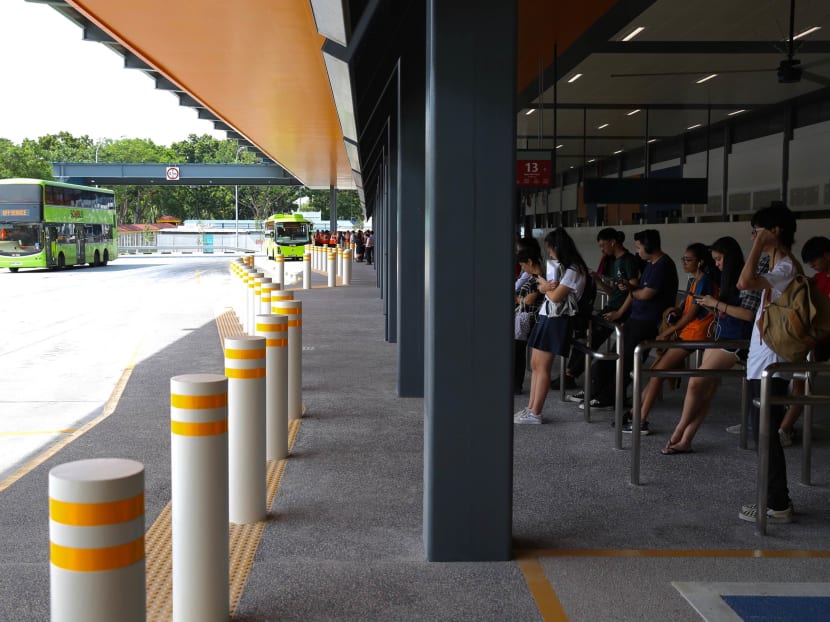
MORE CHOICES FOR BUS DRIVERS
The entrance of overseas operators to the market has also opened up new opportunities for bus drivers, who have a bigger pool of bus operators to choose from.
Transport expert Loh Chow Kuang, a former secretary of the Public Transport Council (PTC), said that the key benefit for bus captains under the model has been higher salary and joining bonus, attracting more locals to join the workforce.
Indeed, the entry of London firm Go-Ahead and Tower Transit into the local market in 2016 saw a bidding war among the bus operators here to attract drivers to their fold.
In May 2016, Tower Transit announced a 3.5 per cent pay hike for its drivers and staff, which meant that a junior driver would receive a basic monthly pay of S$1,930.
A month later, SBST raised the gross monthly salary for new bus captains who are Singaporeans and permanent residents to about S$3,460. The amount included a higher basic monthly salary of S$1,950 — up from S$1,775 — as well as overtime and incentives.
In July the same year, Go-Ahead raised the minimum basic starting salary for Singaporeans and permanent residents to S$1,950 a month, up from S$1,865.
More locals have also joined the profession with the move to the new model.
In 2017, the LTA said that more than 1,000 bus drivers had joined the industry since the implementation of the bus contracting model, of whom 80 per cent were locals.
For Mr Sethuraman Krishnan, 53, the switch from SBST to Tower Transit in 2016 saw his basic pay increase by S$400 to S$1,900.
The benefits of his pay package were also better, said Mr Sethuraman, who left his job as a bus captain at Tower Transit last month due to personal reasons.
While SBST had provided dental benefits of S$150 annually while he was working there, Tower Transit offered S$300 at that time instead.
Beyond pay, companies have also started to offer more opportunities in training and skills upgrading. Go-Ahead, for instance, offers training for drivers to improve their driving skills while Tower Transit offers sponsorship for Workforce Skills Qualifications courses.
When Mr Rickee Ng, 66, worked as a bus captain for SMRT Buses back in 2014, he only knew how to drive a single-deck bus.
He was also familiar with only a limited number of routes and was trained in the bus service routes of 178 and 858.
However, when he joined Tower Transit in July 2017, Mr Ng said that a slew of opportunities opened up for him.
For one, he was immediately allowed to drive a double-decker bus. He was also given the opportunity to learn the various routes available, and he decided to learn all the service routes operating out of Jurong East Interchange, although he primarily services bus 143 which runs between Jurong East and Toa Payoh.
“At Tower Transit, they allow you to expand your skills to drive different kinds of bus models and different services. They want bus captains to explore and be more versatile,” said Mr Ng.
While he estimated that his working hours were longer at Tower Transit – bus captains have to complete 44 hours a week – Mr Ng said that the hours translated into better take-home pay.
Mr Ang Hin Kee, who is deputy chairperson of the Government Parliamentary Committee (GPC) for Transport, said that the presence of more operators in the market has opened more options for bus captains.
“Different bus captains have different preferences. Some say they are more familiar with a particular route. Others know if they can be trained to drive different bus services or different bus timings, they can draw a higher income,” said Mr Ang, who is also a Member of Parliament for Ang Mo Kio Group Representation Constituency.
A RELIANCE ON GOVERNMENT SUBSIDIES
While the industry appears to have achieved some stability with four operators in the market, some experts have raised questions about the sustainability of the model.
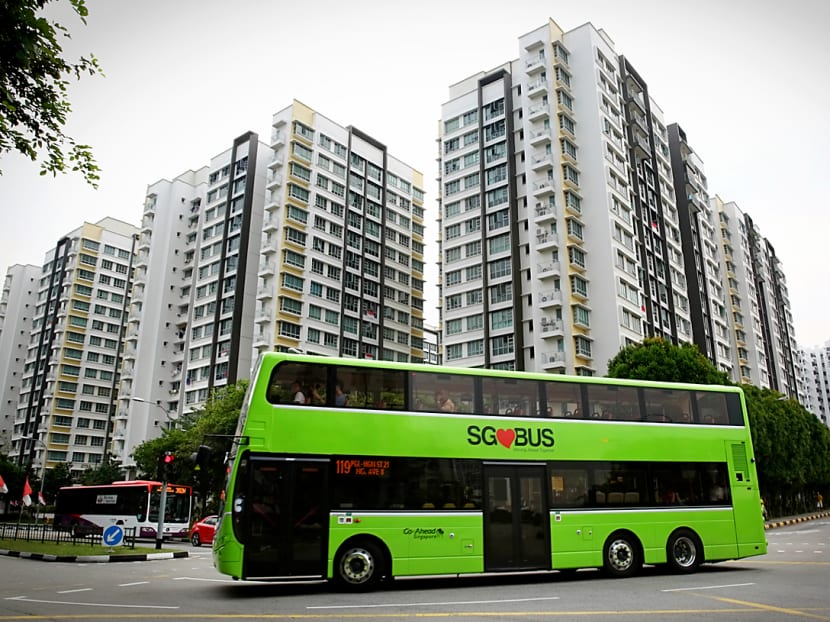
Shortly after the bus contracting model kicked in September 2016, the Government announced that it will continue subsidising bus services by S$3.5 to S$4 billion in total in the next five years.
Even before the bus contracting model kicked in, the Government said that it will subsidise about S$3.5 to S$4 billion over five years from 2016 onwards to improve service levels under the model.
In 2015, before the model kicked in, LTA's overall operating expenditure was S$1.536 billion. The LTA did not provide a breakdown of expenditure of trains and buses. The overall operating income was S$786 million. Government grants of S$773 million supported the transport system here.
One year into the model’s implementation, operating expenditure for buses alone, which consists of the contract with the winning bus company as well as the upkeep of assets among others, was S$979 million.
The expenditure was supported by S$423 million in grants, as well as S$513 million in operating income.
Since then though, the operating expenditure for buses has shot up to S$1.925 billion. Of this, government grants made up S$1.024 billion while fare revenue rose to S$834 million.
This essentially means that less than half of the operations for buses here are supported by revenues from fares, with the majority coming from Government subsidies instead.
With public transport ridership increasing at a pace of about one to two per cent each year over the last four years, fare revenue collected has not increased in tandem with operating expenditure of buses.
QUALITY VERSUS PRICE
Experts said that a key reason why the bus contracting model runs at a significant operating loss is because the level of service that the LTA expects bus operators to offer is more than what a for-profit bus company would provide.
Furthermore, the LTA has indicated a preference for quality over price when awarding contracts, they noted.
For instance, when SBST won the bid for the Bukit Merah package last February, it did so with a price of S$472 million. This was about S$53 million higher than the lowest bid offered by a consortium of the Jiaoyun Group and Travel GSH.
Travel GSH is a local tour bus operator, while the Jiaoyun Group offers transportation services in China.
At the time, LTA explained that it gave greater consideration to quality over price during the evaluation process. In the case of SBST, it had demonstrated extensive experience in bus operations while offering good value for money.
Singapore University of Social Sciences (SUSS) transport economist Walter Theseira noted that bus operators can only make money if their buses are full or heavily utilised.
Once there are enough passengers on board to cover the costs, the additional passengers provide profit.
However, increasing profits involves cutting back on the service quality. This means that either each bus has to be packed with even more passengers, or fewer buses should ply the roads. Either case will be viewed as a reduction in service quality, said Dr Theseira.
On whether the LTA should continue to prioritise quality in the submitted bids, he said that it is not advisable to tender bus contracts on cost alone because the ability of the tenderer to successfully execute the contract is critical.
“The expense of a higher bidder, while not desirable, is much preferred to the problem of dealing with a bus operator who is unable to meet the performance criteria,” added Dr Theseira, who is also a Nominated Member of Parliament.
“It is very expensive to deal with an operator who cannot deliver, because even if you have penalty clauses, any money you do recover is unlikely to make up for having to replace a failed operator at short notice, or the service shortcomings in the meantime.”
BUT IS THIS SUSTAINABLE?
Some analysts say that having the Government to continue subsidising the industry is not a sustainable option and commuters need to cough up their share to maintain service standards.
Urban transport expert Park Byung Joon, who is also from SUSS, said that commuters could not expect the same level of service standards while maintaining the same level of bus fares.
The “simple fact” is that it takes that much money to run buses frequently, he added. That, coupled with better pay for drivers, will drive the total expenses up.
Both Associate Professor Park and Dr Theseira questioned if the public is willing to pay for the level of service that it expects.
“If the answer is no – that is, the public enjoys high-quality services but does not want to pay the full price – then the Government must either continue to subsidise or find ways to cut service quality or optimise services that the public is not too sensitive to,” said Dr Theseira.
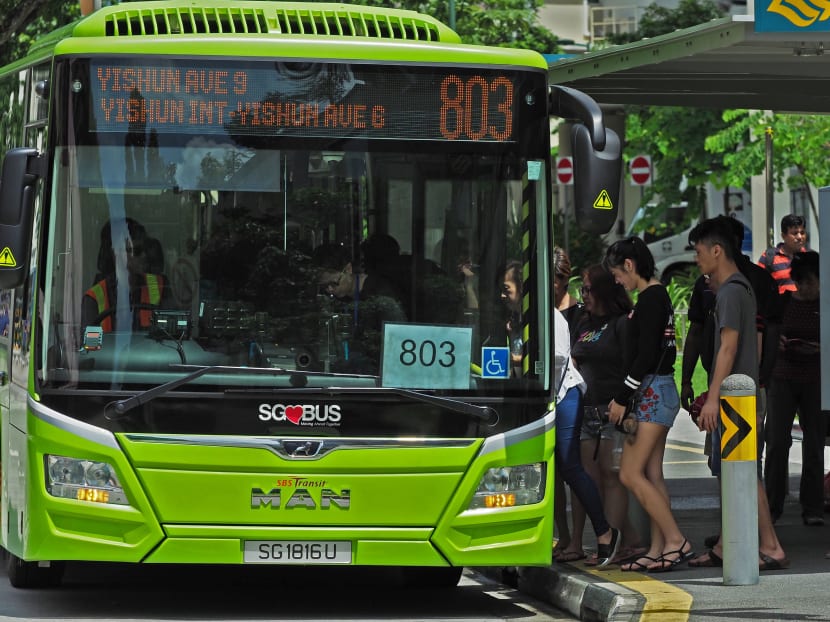
Ultimately, he said that the Government is running high-quality services that cannot recover costs, much like providing business-class service on a flight at economy prices.
“Commuters like this for obvious reasons, but the long run, sustainability is an open question.”
The Government seems to have recognised that it will be difficult to support the operating costs for public transport here, including bus operations, without increasing fares.
In July, Transport Minister Khaw Boon Wan had signalled the need for higher public transport fares, saying that it would be unsustainable to continue relying on government subsidies to fund public transport infrastructure. Mr Khaw said then that subsidies given out “have exceeded their intended scope”.
In October, when a fare hike was announced by the PTC, its chairman Richard Magnus also sounded the alarm on the long-term sustainability of the public transport system here.
He told the media that there was a widening gap between revenue and cost for providing public transport services in Singapore, much like other cities around the world.
The PTC, which regulates public transport fares, took pains to remind the public that despite the hike of 7 per cent in fares – the biggest percentage jump since 1998 – Singapore continues to boast some of the lowest transport fares in the world.
According to the PTC, Singapore will still have the world’s second cheapest transport fares for adults among 11 developed countries.
In a comparison of public transport fares in 11 other cities with similar public transport systems after the fare adjustment this year, the PTC found that Singaporeans paid S$1.48 for 10km journeys – the average distance travelled by a Singaporean commuter.
Meanwhile, commuters in other cities such as Sydney (S$3.16) and Toronto (S$2.68) forked out higher fares. Only Beijing paid a lower fare of 83 Singapore cents.
Mr Lim Biow Chuan, MP for Mountbatten single-member constituency and a member of the Transport GPC, said that if it eventually comes down to raising fares to reduce the operating costs of public buses, there will be no pleasing everyone.
“If you go out to the public and you share your figure, and you tell people that this is something that we can think about, a reasonable person would conclude whether the increase is fair or not… So if you ask a reasonable person, they will accept the increase," said Mr Lim.
“But there are also those in the extreme. They want good, fast services but they don’t want to pay for it. And I don’t think that’s reasonable."
Nevertheless, he believes that if the Government explains the circumstances of the hikes, any reasonable member of the public will be able to accept that these hikes are fair.
IS THERE A WAY AROUND A FARE HIKE?
While the Government has generally turned to fare hikes as a way to defray costs of bus operations, analysts offered a few suggestions on other ways to avoid passing on the costs to commuters.
Dr Theseira said that one way is to optimise the services of buses.
This could be done by using existing data to assess the benefits of continuing to run worst-performing bus services at their current operating levels.
For instance, operators could assess if there are alternative bus services available and the impact on commuters from reducing the frequency of a bus service.
Mr Loh, the former PTC member who is also the president of transport consultancy firm Singapore Urban Transport International, said that services could be optimised by introducing more priority lanes for buses to minimise bus stop delays and speed up buses, as well as introducing more express bus routes with limited bus stops.
However, Dr Theseira cautioned that optimising bus services is easier said than done.
While airlines typically cut under-performing routes, they are generally viewed as profit-making companies, and are thus entitled to do so. However, the public does not feel the same way about bus services, said Dr Theseira.
Mr Ang, the deputy chairman of the Transport GPC, said that the Government could enhance their efforts to bring in revenue from other sources like advertising on the body of buses or bus interchanges.
Beyond optimising bus services or raising revenue, Mr Loh said that operating costs could also be lowered through tweaks to the tender process.
By attracting more qualified bus operators to bid, especially those from Asia who tend to put in competitive bid prices, lower service fees could be paid to contracted bus operators.
Currently, interest from overseas operators seem to be waning and experts suggested that it was due to their inability to compete against homegrown companies on cost.
Assoc Prof Park said that while British operator Go-Ahead was able to win the Loyang tender in 2015 with the lowest bid, it was only due to its aggressive interlining practice, which it has since cut back on.
When SBST won the Seletar contract with a price of S$480.3 million in 2017, beating out eight other companies, it was able to do so at such a low price due to its existing presence in the Singapore market.
Following this tender, interest from foreign companies in bus contracts here “dried up”, noted Assoc Prof Park.
For instance, Australia’s Busways Group and Keolis from France did not participate in the bidding for the Bukit Merah package last year.
In that round, only the existing bus operators here and Chinese operator Shenzhen Bus Group and a consortium between Jiaoyun Group and Travel GSH participated in the bidding.
Assoc Prof Park said that he did not expect to see much competition in the latest round of tender that had been called for Sembawang-Yishun and Bulim bus routes.
“If it keeps going like this, foreign operators will have to bid for a very low price, and that does not make the contracts an attractive business proposition,” he said.
At the same time, Dr Theseira said it would be inefficient to have too many operators, with each operator only having one or two packages, as there will be little opportunity for economies of scale or business continuity.
Mr Loh said that the latest tender which is the first to offer two packages at the same time, is the way forward for bus contracting as it will provide companies with the economics of scale and make it more attractive to bid for.
As for the four operators currently in the market, Mr Ang suggested that they consider optimising their resources by branching out into other forms of transport services such as private hire services and offer commuters benefits for using their slew of services.
When asked if they intended to remain in Singapore, both Tower Transit and Go-Ahead stressed that they had positive experiences here and were looking to stay for the long term.
Mr Winston Toh, managing director of Tower Transit, said that the LTA’s forward-looking plans and investments in the public transport system have positioned Singapore as a leader in public transport planning.
“For Tower Transit Singapore to operate on such a well-regarded stage has been a privilege, and we welcome any opportunity to run more services here,” he said.
Mr Cutts of Go-Ahead said that the company is committed to the Singapore market and will look to continue operating in more packages.
“We will look at each package on its own merits but we will seek to grow Go-Ahead Singapore, and be in Singapore for the long term.”








